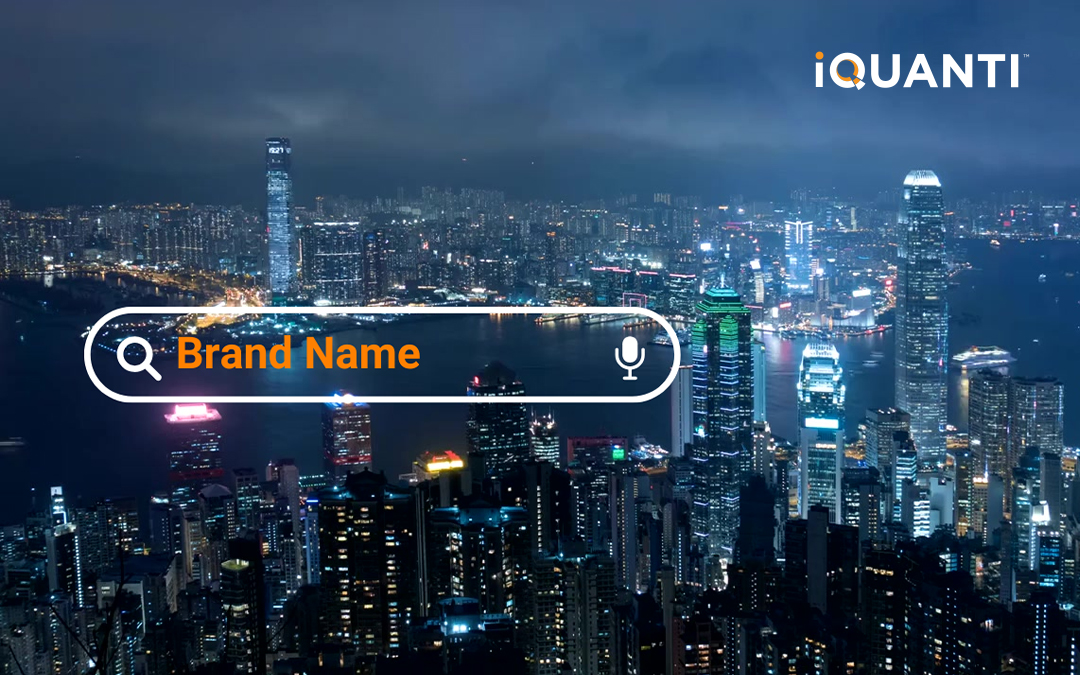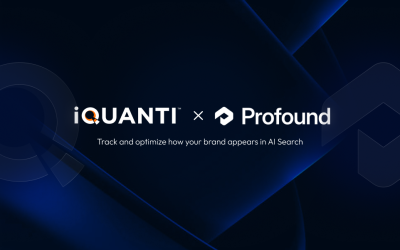Ramanuj Paul, Director of Paid Channel Solutions at iQuanti, shares his thoughts on maximizing branded search campaign ROI without overspending.
For CMOs, Heads of Digital, and Paid Search leaders, branded search campaigns are often seen as table stakes in the performance marketing mix. But as budgets scale, an important question arises: are these campaigns actually driving incremental value, or are they quietly inflating your cost per action (CPA)?
Branded search definitely plays a crucial role in capturing high-intent leads while protecting your brand presence on the SERP. Yet, the line between essential and excessive spend can quickly blur for mature brands with strong organic visibility and rising CPCs.
In this article, let’s break down how to reassess the value of branded search in your funnel, the common pitfalls we see with enterprise brands, and the data-backed strategies we use at iQuanti to help clients cut wasted spend and improve ROI.
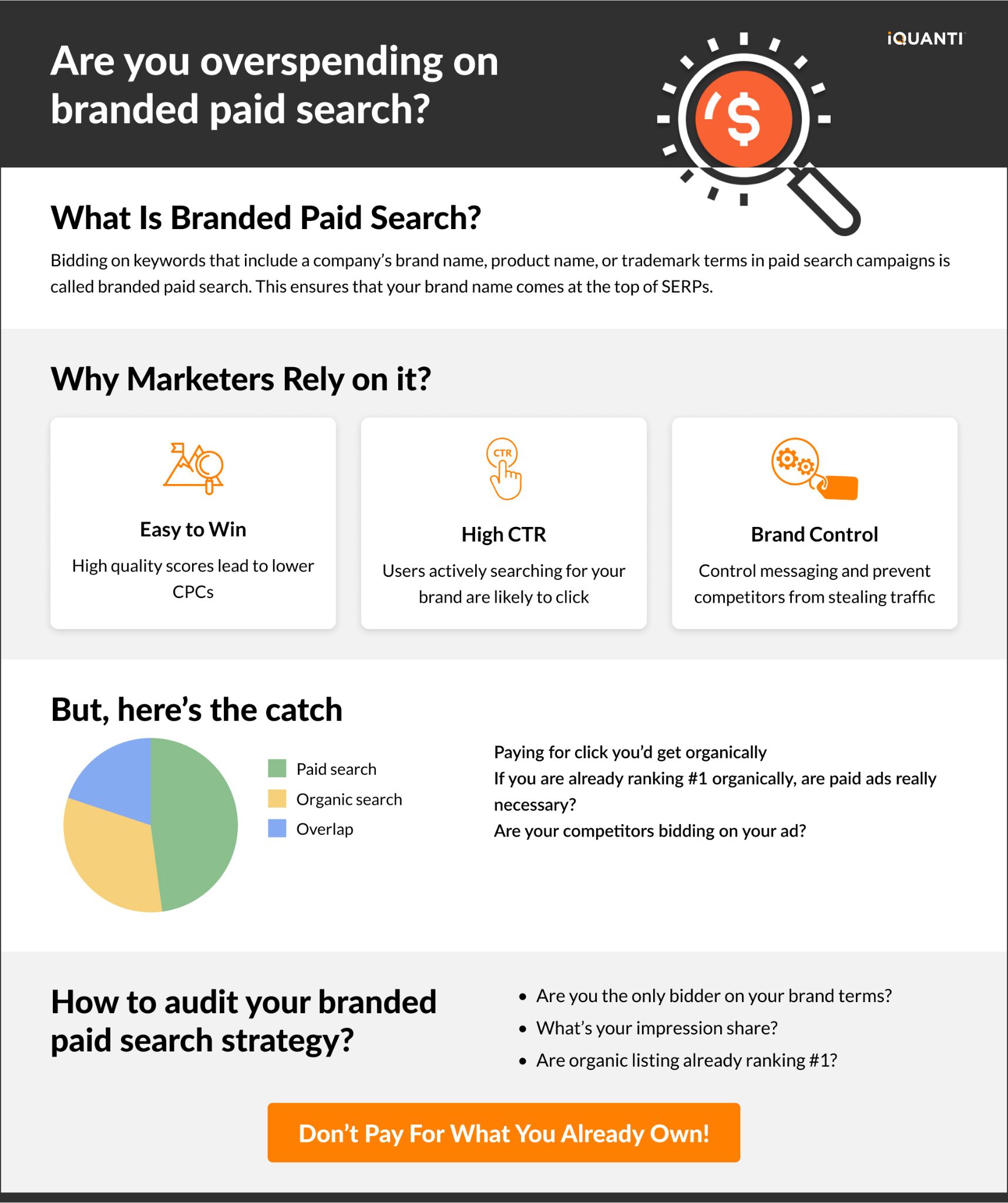
What Are Branded Search Campaigns?
Branded search campaigns secure prime digital real estate, driving customer acquisition and growth. For large brands, they command a significant share of the performance marketing budget, but without careful optimization, they risk inefficiency. At iQuanti, we refine strategies by analyzing competitive pressure, cost per click (CPC) trends, and organic visibility to cut waste and maximize ROI.
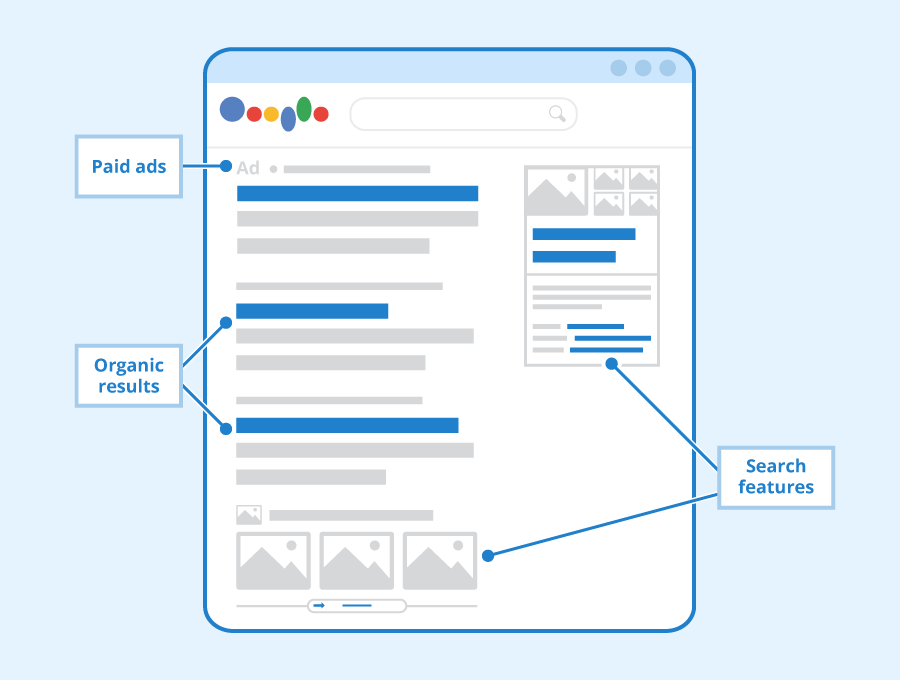
SERP view of branded ads

How Are Branded Search Campaigns Important in Digital Marketing?
- Stronger Brand Authority: Since branded search ads dominate prime SERP real estate, this signals credibility and professionalism. They also help guide users to the most relevant landing page leading to minimizing drop-offs and confusion.
- Higher Click-Through Rates (CTR) and Conversion Rates: Brand searches indicate strong intent, making these campaigns highly efficient.
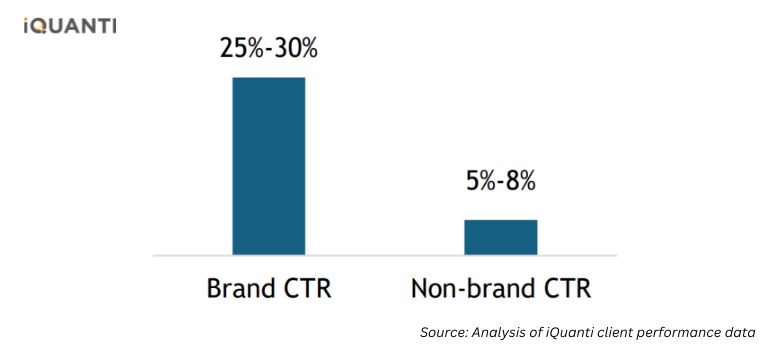
Average CTR for brand and non-brand campaigns in paid search
- Protection Against Competitors: If you’re not bidding on your own brand terms, your competitors probably are. Without a branded campaign, you might be handing over your traffic, even potential customers, to rivals.
Branded search isn’t just defensive it’s a strategic lever for profitable, long-term growth.
Key Considerations for Mature and Large Brands
Branded search often dominates paid media budgets for mature brands, but without careful oversight, it can lead to inefficiencies. Here’s what to watch for:
- High Brand Searches Resulting in High Spend Share: Strong brand recognition drives high search volume, sometimes consuming over 50% of the performance marketing budget. Without optimization, this can lead to redundant spending and diminishing returns.
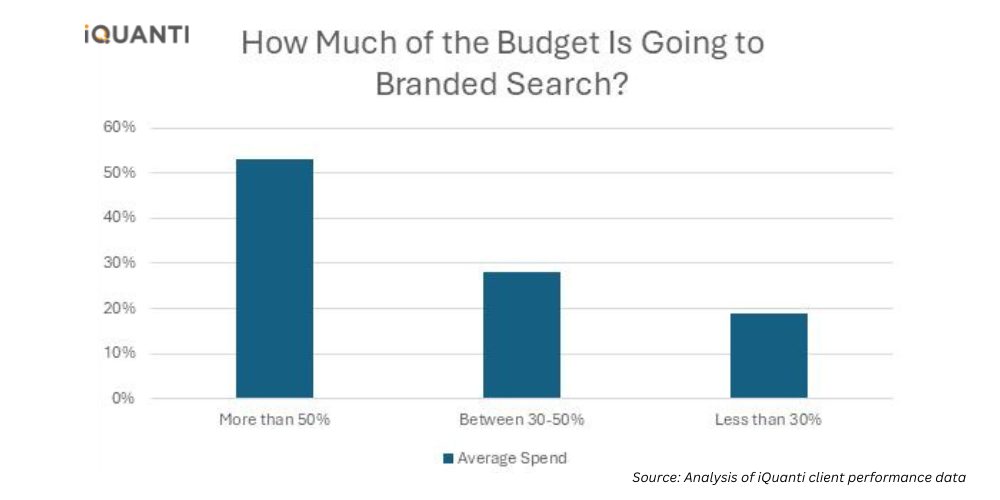
- Conquesting by Others: Rivals bidding on your brand terms increase CPCs and divert potential customers. In highly competitive industries like retail, finance, and tech, running branded ads on heavily contested terms often delivers higher incrementality.
- Rising CPCs: Increased demand—whether from your own campaigns or competitors—can drive up costs over time. Regular bid adjustments and efficiency-focused optimizations are essential to maintain strong ROI.
- Keyword Share of Click and Campaign Structure: Not all branded keywords perform the same. Head terms like “[Brand Name]” attract general interest and has high volume, while specific queries like “[Brand Name] login” or “[Brand Name] product” signal high intent. Structuring portfolios and campaigns based on keyword intent, volume and competitiveness provides better control and results in improved efficiency
- Disconnect in Measurement: Standard metrics like CPA and ROAS don’t always capture the full impact of branded search. Factoring in organic lift and conducting incrementality tests ensures better decision-making.
These challenges highlight a critical truth: Scale amplifies both opportunity and risk. For mature brands, branded search success depends on moving beyond a “set it and forget it” mindset.
Is the Brand CPA Real?
Branded search can show a low CPA, but is it driving true growth or just capturing demand that would convert anyway? Understanding its real value requires a deeper look:
- Attribution & Incrementality: Standard attribution models often credit paid ads for conversions that would’ve happened organically. For example, a loyal customer searching “[Brand Name] store” might click your ad but was already headed to your site. Incrementality studies—such as geo-based holdout tests—reveal the real lift driven by paid search, separating signal from noise.
#LearnWithiQuanti: What Are Attribution Models?
Attribution models are frameworks used to determine how credit for a conversion is assigned across different touchpoints in the customer journey.
When a user sees multiple ads or visits your website several times before converting (e.g., buying a product or filling out a form), attribution models help marketers understand which channels or interactions influenced that conversion the most.
- Holistic Search: Evaluating changes in branded paid search campaigns in isolation is a recipe for misjudgement. Organic rankings, competitor activity, and cross-channel influences all shape performance. A holistic view ensures you’re not over-investing in areas where organic strength already carries the load. Having a holistic dashboard enables leaders to monitor and react faster to some of the outcomes from cross channel changes and increased competition

Performance comparison of organic and paid search terms
By questioning the “reality” of your CPA, you can shift focus from vanity metrics to meaningful outcomes. This mindset is at the heart of smarter branded search strategies.
How We Improve ROI for Brands at iQuanti?
We’re redefining how brands approach paid search to maximize ROI without compromising growth. At iQuanti, our approach combines data-driven insights with innovative testing.
Here’s how:
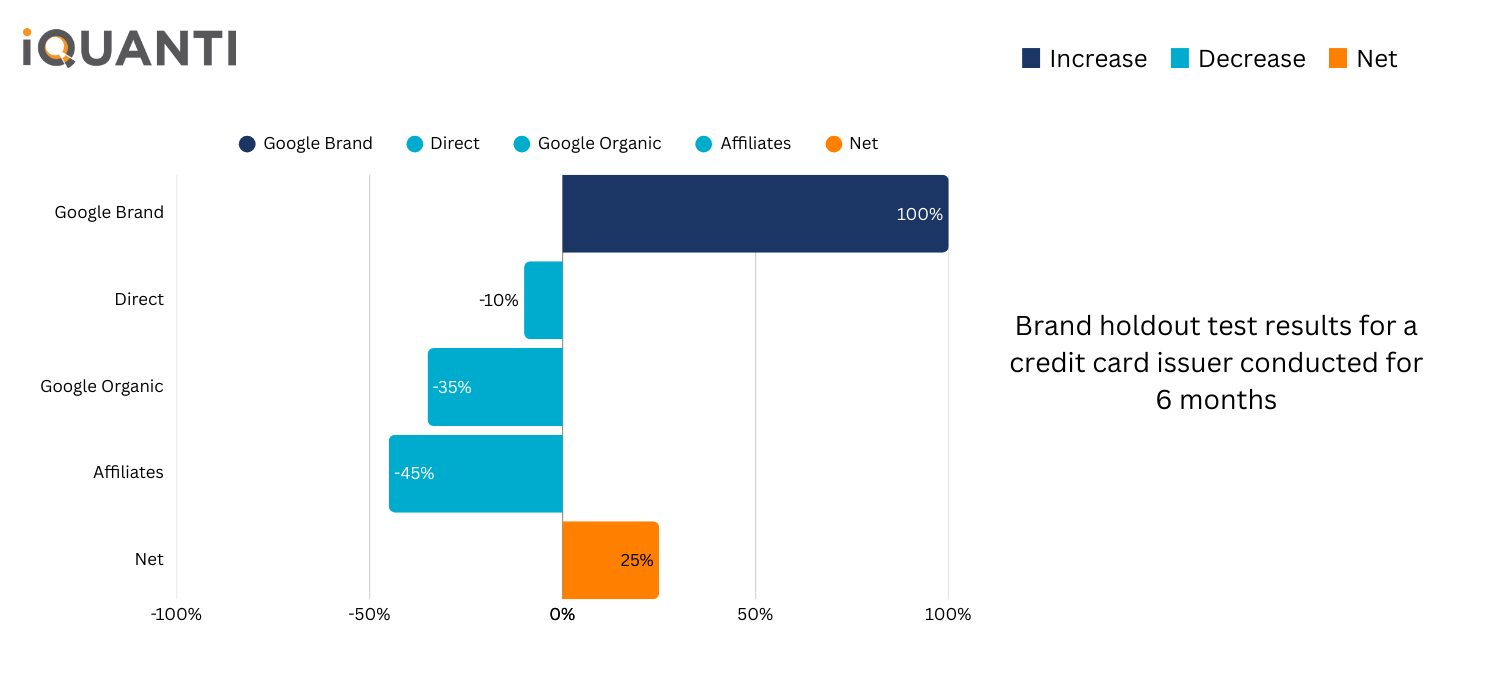
Brand holdout test results
- Holdout Tests Within Brand Search: We conduct controlled experiments, such as pausing campaigns in specific regions, to measure whether paid search truly drives new business or just captures existing demand. Our studies show branded search delivers 20%-50% incrementality, depending on keyword competition and intent. Higher incrementality is observed in markets and keywords with moderate to low conquesting.
#LearnWithiQuanti: What Is a Brand Holdout Test?
A brand holdout test involves temporarily pausing branded paid search ads (e.g., Google Brand) in certain markets or segments for a certain duration to observe how traffic and conversions shift across other channels.
Why it matters: The test helps determine how much branded search is truly incremental versus redundant (i.e., traffic you would’ve received anyway through direct or organic means).
Multi-Tiered Optimization: We analyze CPC trends, organic rankings, and competitor activity to refine bidding strategies. For keywords where you already rank #1 organically, we reduce bids to avoid unnecessary spend, while aggressively protecting high-value terms under conquesting pressure. AI-powered bidding ensures cost efficiency by adjusting in real time to auction competitiveness, helping brands spend just enough to win auctions without inflating costs.
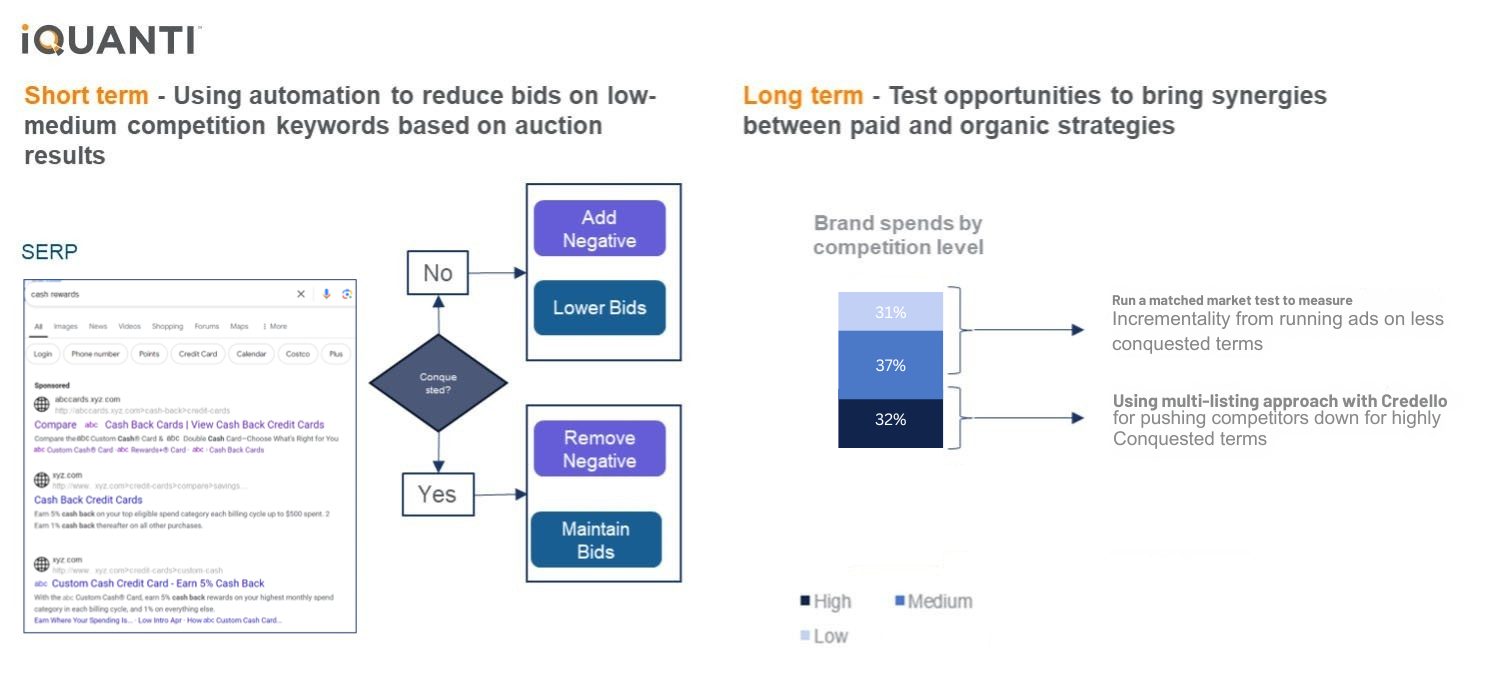
iQuanti’s approach to multi-tiered optimization
These tactics have delivered tangible results: cost savings for our clients, improved profitability, and a sharper focus on acquiring new customers. It’s proof that branded paid search can be both a growth engine and a lean operation.
#LearnWithiQuanti: What Is Multi-Tiered Optimization?
Multi-tiered optimization is a layered approach to improving digital campaign performance by optimizing across multiple keyword groups based on level of competitiveness, CPCs and SEO strength using AI and automation
Why it matters: Instead of just going after high impression share for branded paid search, this method ensures every layer of the campaign is aligned and contributing to performance. At iQuanti, we apply this strategy to help brands improve ROI holistically, not just in silos.
Conclusion
Branded paid search drives visibility, conversions, and competitive defense, but for large brands, it requires a strategic approach. Optimizing spend, countering conquesting, and closing measurement gaps unlock true profitability.
At iQuanti, we’ve seen data-driven strategies turn branded search campaigns into a growth engine. If your approach feels bloated, it’s time for a smarter strategy. The question isn’t whether to invest—it’s how effectively you do it.
Let’s talk strategy. Get in touch with experts at iQuanti

